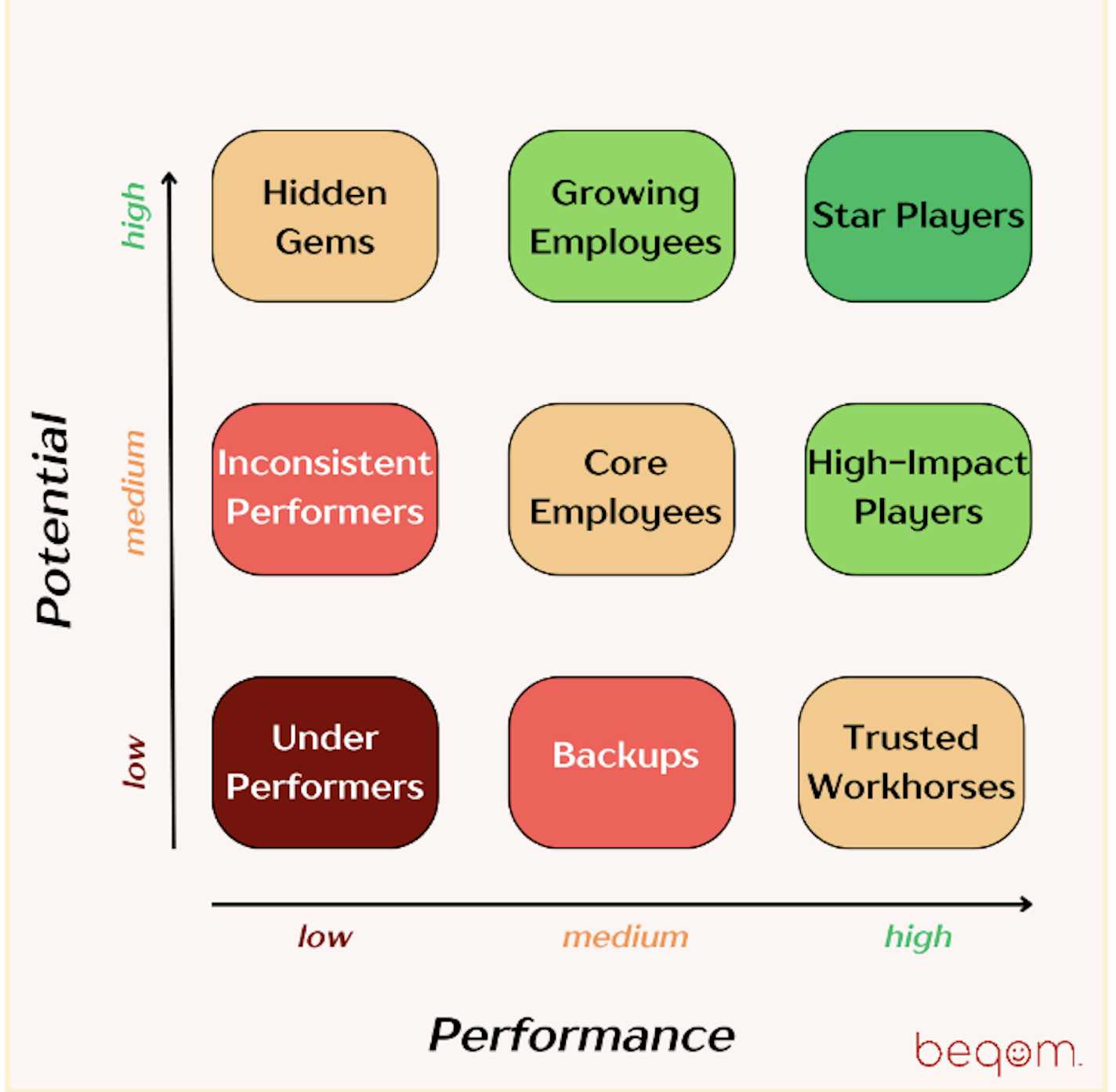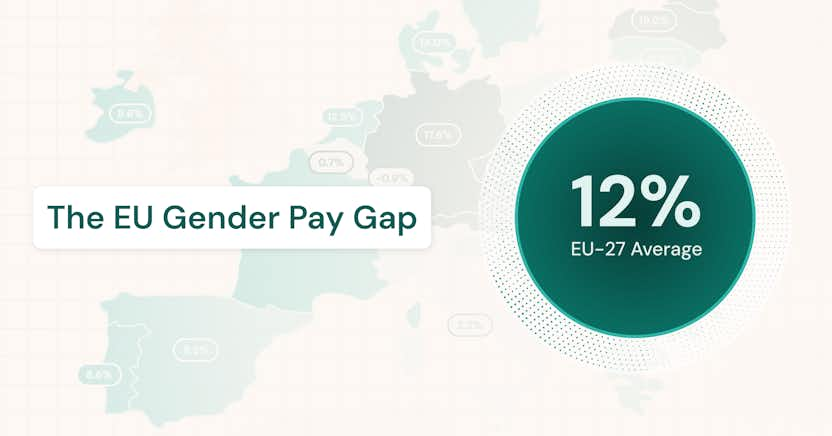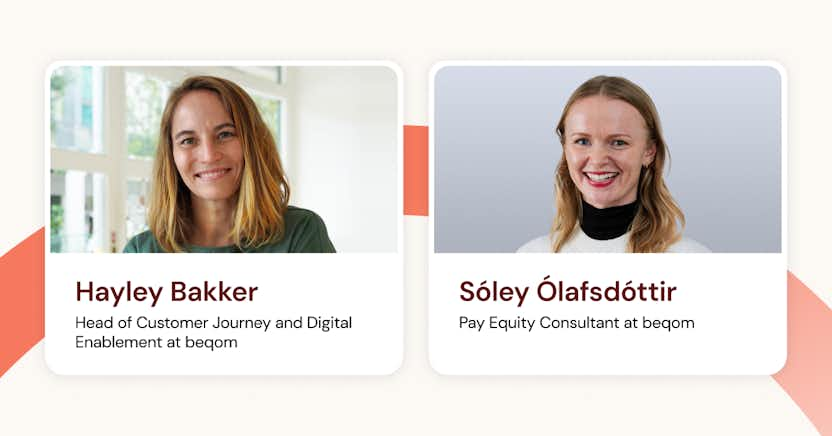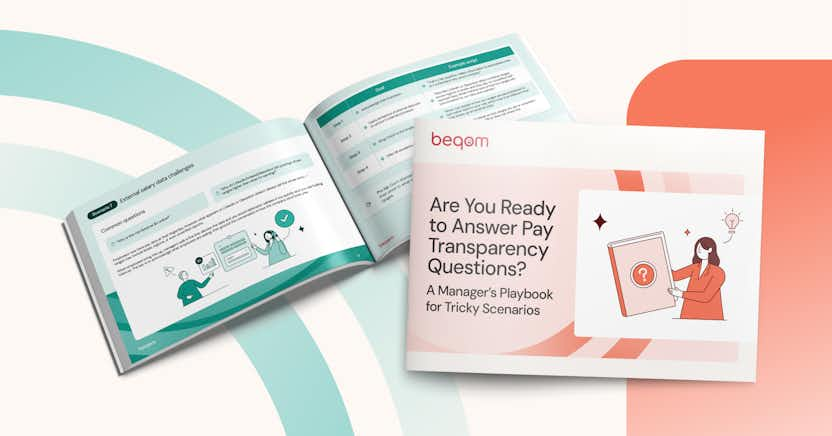Mastering Talent Calibration for Success

Learn more about the following beqom products
“We were looking for a solution that would allow us to handle both our performance management and compensation programs in one system. The ability to base compensation on the attainment of performance goals will allow us to tie employee efforts directly to the success of the company, providing clarity and motivation for our workforce.”
Talent calibration is a crucial aspect of ensuring fairness and equity in talent management practices.
Talent calibration involves reviewing and discussing employees’ performance ratings and potential. Through this process, managers, HR professionals, and other stakeholders assess the health of the organization’s talent pool, analyzing key factors, such as current employee capabilities, to identify any biases or inconsistencies in performance evaluations.
As nearly three-quarters of organizations struggle to maintain effectiveness in both performance management and pay-for-performance structures, talent calibration emerges as a critical solution for addressing common issues and biases.
Through a carefully planned talent calibration process, organizations can improve their talent pool, boost employee morale, and optimize their performance review strategies for long-term success.
In this article, we explore the importance of talent calibration and show you how to implement the process in your organization following this clearly defined step-by-step guide.
Why Is talent calibration important?
Talent calibration is a vital process for several reasons, as it:
- Identifies gaps in talent: As talent calibration allows organizations to assess their talent health, they can effectively determine the gap between current and expected talent.
- Provides an objective employee ranking: Talent calibration establishes clear and standardized criteria for assessing employee performance and potential, ensuring consistency and objectivity in evaluations.
- Allows rewards for top performers: By systematically reviewing performance ratings, organizations can identify and support high-potential employees, fostering their development, rewarding their achievements, and ensuring their retention.
- Encourages collaboration among managers: Through talent calibration sessions, managers can engage in discussions to align their understanding of performance standards, expectations, and evaluation criteria.
- Ensures fairness: Talent calibration introduces further transparency and accountability in the organization’s performance evaluation process to ensure equity and fairness.
What is performance calibration?
Performance calibration and talent calibration, although sometimes used interchangeably, have distinct differences. Talent calibration focuses on evaluating and discussing the performance ratings and potential of employees across the organization. Performance calibration focuses on aligning performance ratings and standards among different teams or departments. However, although performance calibration focuses on the present, while talent calibration looks into the future, both processes aim to optimize the potential and performance of employees.
The talent calibration process
The talent calibration process can be divided into several key stages.
1) Preparation
Organizations must carefully plan the talent calibration process to ensure its outcomes align with their goals. Preparation should begin with defining clear objectives for the process. While some organizations focus on identifying high-potential employees during talent calibration, others may prioritize addressing performance gaps. With the organization’s strategic goals clearly outlined, the calibration process can be tailored to meet specific talent management priorities and drive desired organizational outcomes.
Before the talent calibration process begins, organizations should also establish measurable criteria for evaluating employee performance. This includes objective data, such as sales figures, customer satisfaction scores, and productivity metrics. By defining these criteria in advance, participants in the calibration process can ensure consistency and fairness in their evaluations.
2) Selecting participants
After making key preparations, organizations can assemble managers, HR reps, and other stakeholders to participate in the talent calibration process. Members must coordinate their schedules to ensure they are all available to participate and may need to secure a meeting venue, set up a virtual conference application, or otherwise arrange the logistics for the session.
Participants should begin familiarizing themselves with the objectives and evaluation criteria of the calibration process to ensure they can make meaningful contributions. For managers, this may involve preparing important data regarding their team, such as their current performance, potential successors, and future career paths.
3) Employee ranking
Once all participants are present, they can begin discussing the talent pool’s overall health within the organization. This involves reviewing the performance and potential of individual employees against predetermined criteria and benchmarks. Participants can share insights, observations, and perspectives on each employee’s contributions, strengths, weaknesses, and future potential.
During this process, participants must prioritize aligning on what constitutes great performance to enhance the fairness and accuracy of future performance reviews. Following these discussions, participants can collectively rank all employees based on predetermined factors. Analytics tools can aid this process, allowing participants to analyze performance metrics alongside employee compensation to identify trends and patterns in employee performance relative to their compensation levels.
This ranking process enables the identification of top performers, high-potential individuals, and areas for improvement, which can optimize talent management decisions, hiring processes, and resource allocation within the organization.
4) Plan of action
After assessing strengths and weaknesses in the organization’s talent pool and identifying top-performing employees, talent calibration participants can establish a plan of action. This plan should address key areas such as talent development, succession planning, and performance improvement initiatives.
Development plans can be created for high-potential employees to nurture their skills and support their transition to new roles or responsibilities. Similarly, targeted interventions and support systems can be implemented for employees with performance gaps to help and motivate them to improve.
Finally, participants assess this data to refine their compensation systems and ensure pay equity across all employees. Pay equity is the concept of compensating employees with similar roles and skill sets to receive equal pay regardless of their race, gender, age, or ethnicity. By using data and findings from the talent calibration process, organizations can identify pay gaps and explore their root causes. Organizations can streamline this process with specialized pay equity software to fix pay inequity and ensure all employees are compensated fairly. This can improve employee morale, increase retention rates, and enhance organizational productivity.
Top talent calibration practices
That’s the basics, now optimize your talent calibration process with these best practices.
Back decisions with data
Ensure that all decisions during the talent calibration process are based on facts rather than subjective opinions by backing all decisions and discussions with data. By incorporating quantitative performance metrics and other objective indicators, your organization can provide constructive feedback and targeted development initiatives, enabling employees to clearly understand their performance and how to improve it.
Create smaller focused groups
Research shows that groups with seven or more participants are more susceptible to confirmation bias, which can hinder the effectiveness of talent calibration sessions. To mitigate this risk, organizations should consider creating smaller, more focused groups for calibration discussions. By limiting the number of participants, organizations can encourage more meaningful contributions and minimize the impact of biases. Smaller groups also allow for greater flexibility in scheduling, making it easier to coordinate and conduct calibration sessions.
Include a group facilitator
By designating a group facilitator, an organization can ensure efficient group decision-making during the talent calibration process. A group facilitator can guide discussions, provide a structured approach, and encourage collaboration by all participants. Pre-assigning a group facilitator also reduces the potential influence of power dynamics or personal biases, facilitating a productive environment where ideas can be exchanged freely to reach unanimous decisions.
Provide rewards for high-potential employees
Consider adopting creative approaches to reward employees and encourage them to continue performing at an exceptional level. As employees are adequately recognized for their efforts and receive meaningful rewards rather than just monetary compensation, they are likely to feel more valued in their roles.
Organizations should also focus on retaining high-performance employees by staying attuned to their needs and aspirations and preparing them for growth. This can encourage quality performance and lead to productive, motivated, and loyal employees who care about the long-term success of the organization.
What is the 9-box talent calibration review?
The 9-box talent calibration review is a performance assessment tool that supports the evaluation of employees, ensuring accuracy and effectiveness. With two axes, one representing employee performance and the other representing employee potential, this tool gives organizations a comprehensive view of their talent pool.

Although effective in some organization’s succession planning, the 9-box talent calibration review has received criticism for encouraging a fixed mindset and focusing too much on labels that could negatively impact employee self-esteem. Studies also demonstrated that the 9-box calibration review negatively impacts marginalized employees, such as women, who were assessed as having lower potential despite receiving higher performance ratings. Due to the room for bias and reduced reliability, the 9-box tool requires organizations to utilize it with caution to avoid negative outcomes during the talent calibration process.
Final thoughts
Overall, the talent calibration process can aid organizations in establishing equitable pay practices, identifying talent gaps, and rewarding top performers. It has been the corporate standard for many years, so it’s good to understand its purpose and how it works. However, despite taking a more objective approach to employee evaluations, the talent calibration process has its limitations. It can be time-consuming, and biases or inherent subjectivity may hinder its effectiveness. Therefore, many organizations opt to refine or move away entirely from the process and adopt alternative approaches that place greater focus on employee improvement.
If you want to explore how innovative technology can help you master talent calibration and maximize productivity, or if you want to explore alternative ways to build a high-performance culture, reach out and contact the experts at beqom.







